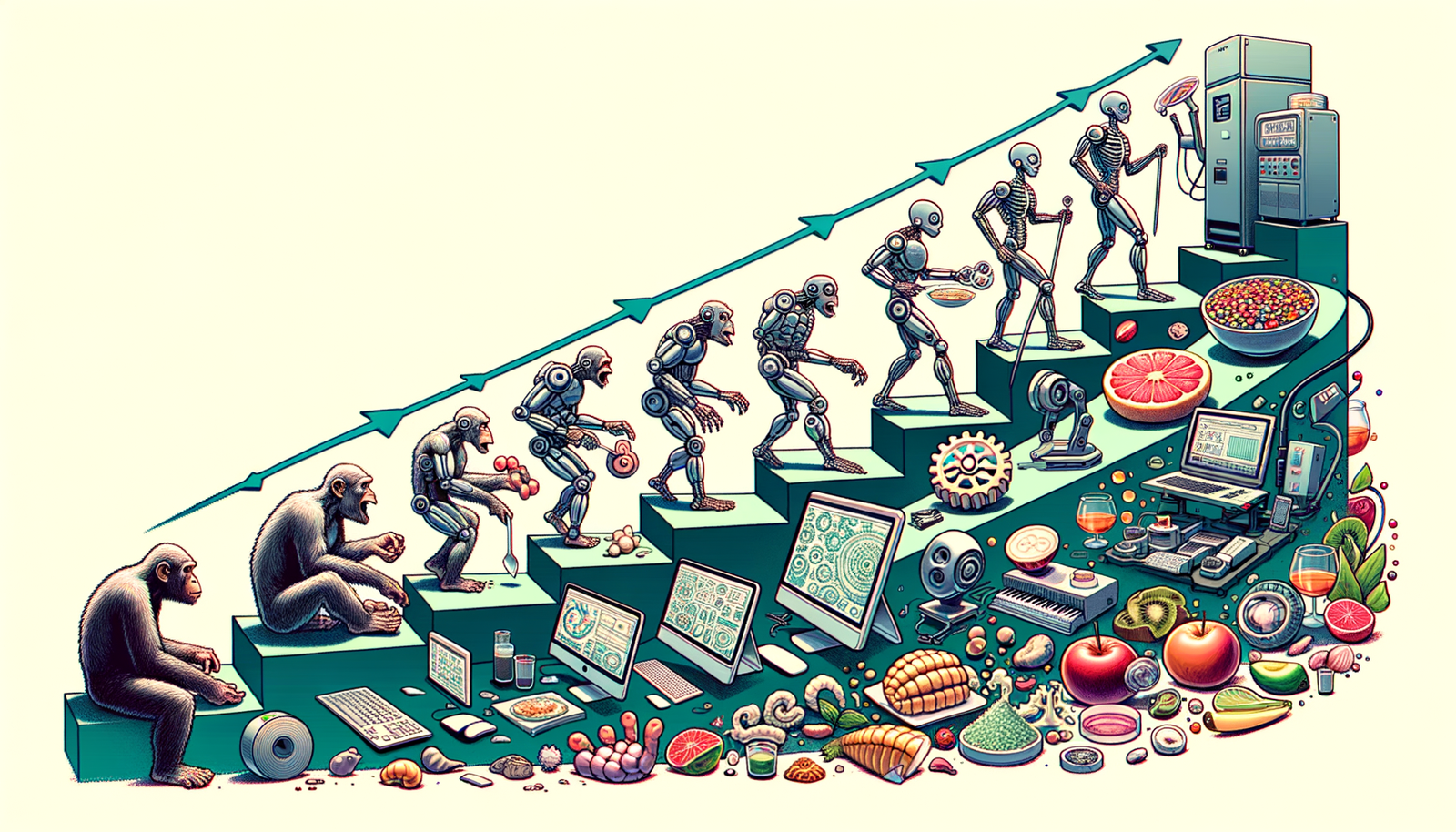Your Cart is Empty
Customer Testimonials
-
"Great customer service. The folks at Novedge were super helpful in navigating a somewhat complicated order including software upgrades and serial numbers in various stages of inactivity. They were friendly and helpful throughout the process.."
Ruben Ruckmark
"Quick & very helpful. We have been using Novedge for years and are very happy with their quick service when we need to make a purchase and excellent support resolving any issues."
Will Woodson
"Scott is the best. He reminds me about subscriptions dates, guides me in the correct direction for updates. He always responds promptly to me. He is literally the reason I continue to work with Novedge and will do so in the future."
Edward Mchugh
"Calvin Lok is “the man”. After my purchase of Sketchup 2021, he called me and provided step-by-step instructions to ease me through difficulties I was having with the setup of my new software."
Mike Borzage
Design Software History: Evolution of CAD Software in Transforming Food Engineering: From Early Innovations to Future Trends
August 25, 2024 7 min read


Introduction to CAD Software in Food Engineering
Overview of CAD Software
Computer-Aided Design (CAD) software is a cornerstone technology in modern engineering, enabling designers and engineers to create precise drawings, models, and simulations of products and systems. CAD software revolutionized various engineering fields by introducing capabilities for digital drafting, 3D modeling, and simulation, replacing traditional manual drafting methods.
CAD software is critically important for several reasons:
- Accuracy and precision in design, which are vital for creating intricate and complex engineering systems.
- Efficiency, reducing the time required to create and revise designs.
- Facilitates collaboration among engineers, architects, and other stakeholders.
- Enhances the ability to simulate and test designs before physical prototyping.
Specific Focus on Food Engineering
Food engineering is a specialized field that deals with the design and development of processes and equipment for the production, processing, packaging, and distribution of food. This field presents unique challenges due to the need for hygienic design, compliance with food safety standards, and the inherent variability of biological materials.
CAD software is particularly important in food engineering for several reasons:
- Designing complex food processing equipment such as mixers, extruders, and conveyors which require precise specifications to ensure efficiency and safety.
- Creating layouts for food processing facilities to optimize workflow, sanitation, and space utilization.
- Developing innovative packaging solutions that maintain food quality, extend shelf life, and are cost-effective.
Early Innovations and Key Players
Early Developments in CAD Technology
The evolution of CAD technology can be traced back to the early 1960s with significant milestones marking its development. One of the earliest and most influential contributions was the creation of Sketchpad by Ivan Sutherland in 1963. Sketchpad is often regarded as the first graphical user interface and the precursor to modern CAD systems. It introduced concepts such as the use of a light pen to create and manipulate objects on a computer screen, paving the way for future innovations.
Key milestones in the evolution of CAD technology include:
- 1960s: Development of early CAD programs for specific applications like circuit design and architectural drafting.
- 1970s: Introduction of commercial CAD software, such as AutoCAD, which allowed broader adoption across various engineering sectors.
- 1980s: Advancements in 3D modeling and the introduction of parametric design, enabling more complex and flexible designs.
- 1990s: Integration of simulation and analysis tools within CAD software, enhancing its utility for engineering design and validation.
- 2000s and beyond: Development of cloud-based CAD solutions, facilitating collaboration and access to designs from anywhere.
Adoption in Food Engineering
The adoption of CAD technology in the food industry began to gain momentum in the late 1980s and early 1990s. Early adopters recognized the potential of CAD to address the unique challenges of food engineering, such as the need for precise and hygienic designs.
Some of the key companies and research institutions that led the way include:
- General Mills: One of the first major food companies to integrate CAD software into their design processes for food processing equipment and facilities.
- Nestlé: Adopted CAD tools to enhance the design and development of their production lines and packaging solutions.
- University of California, Davis: Pioneered research in the application of CAD software for food engineering, contributing to academic and industry knowledge.
Technological Advancements and Integration
Solid and Geometric Modeling
Solid modeling and geometric modeling are foundational techniques in CAD software that have significantly impacted food engineering design. Solid modeling involves creating a complete and unambiguous representation of the geometry of three-dimensional objects, allowing for detailed visualization and analysis. Geometric modeling, on the other hand, focuses on the mathematical representation of shapes and forms, enabling precise control over design parameters.
These techniques have been adapted for food engineering applications in several ways:
- Designing food processing equipment with precise dimensions and tolerances to ensure efficiency and safety.
- Creating facility layouts that optimize workflow and hygiene, reducing the risk of contamination.
- Developing packaging designs that are both functional and aesthetically pleasing, enhancing consumer appeal.
Software Tools and Platforms
Several popular CAD software tools and platforms are widely used in food engineering. These tools offer a range of features and modules tailored to the specific needs of food engineers. Some of the most commonly used CAD software in food engineering include:
- AutoCAD: One of the most widely used CAD software, known for its robust drafting and modeling capabilities. AutoCAD offers specialized toolsets for 3D modeling and facility design, making it ideal for designing food processing plants and equipment.
- SolidWorks: A powerful 3D CAD software known for its parametric design capabilities and simulation tools. SolidWorks is widely used for designing complex food processing equipment and performing stress analysis to ensure durability and safety.
- Simulink: Often used in conjunction with MATLAB, Simulink provides simulation and modeling capabilities for dynamic systems. It is particularly useful in food engineering for simulating processes such as fluid flow and heat transfer.
Specific features and modules in these software tools that are beneficial for food engineering design include:
- Specialized libraries for food processing equipment components, allowing for quick and accurate design.
- Simulation tools for analyzing the performance of equipment and processes under various operating conditions.
- Capabilities for collaboration and sharing designs with stakeholders, enhancing communication and reducing design errors.
Future Trends and Impact on Food Engineering
Emerging Technologies
The future of CAD software in food engineering is being shaped by several emerging technologies that promise to enhance its capabilities and applications. These technologies include:
- Artificial Intelligence (AI) and Machine Learning: AI and machine learning algorithms are being integrated into CAD software to automate design processes, optimize equipment layouts, and predict potential issues before they arise. These technologies can also help in developing adaptive designs that can adjust to changing conditions in food processing environments.
- Internet of Things (IoT): IoT devices and sensors can be integrated with CAD software to provide real-time data on equipment performance, environmental conditions, and production metrics. This integration enables more accurate simulations and predictive maintenance, reducing downtime and improving efficiency.
- Virtual Reality (VR) and Augmented Reality (AR): VR and AR technologies are being used to create immersive design environments, allowing engineers to visualize and interact with their designs in a more intuitive and realistic manner. This can improve the accuracy of design reviews and facilitate better communication with stakeholders.
Sustainable Design and Efficiency
Achieving sustainability goals is a major focus in food engineering, and CAD software is playing a crucial role in this effort. By enabling more efficient and sustainable designs, CAD software is helping the food industry reduce its environmental impact. Key contributions of CAD software to sustainable design include:
- Designing energy-efficient equipment that reduces energy consumption and lowers operational costs.
- Developing waste-reducing processes that minimize food waste and improve resource utilization.
- Creating eco-friendly packaging solutions that reduce material usage and improve recyclability.
Challenges and Opportunities
Despite the many benefits of CAD software, food engineers face several challenges in its adoption and use. Some of the key challenges include:
- Complexity of software: CAD software can be complex and require significant training and expertise to use effectively. This can be a barrier for smaller companies or those with limited resources.
- Integration with existing systems: Integrating CAD software with other systems, such as enterprise resource planning (ERP) or manufacturing execution systems (MES), can be challenging and require significant effort and investment.
- Data security: Protecting sensitive design data from cyber threats and ensuring compliance with data privacy regulations is an ongoing concern.
However, these challenges also present opportunities for innovation and improvement. Future opportunities for CAD software in food engineering include:
- Enhanced training programs: Developing more accessible and user-friendly training programs to help engineers and technicians gain proficiency in CAD software.
- Improved integration: Advancing integration capabilities to seamlessly connect CAD software with other systems, enhancing data flow and collaboration.
- Advanced security measures: Implementing advanced security measures to protect design data and ensure compliance with regulations.
Conclusion
Summary of Key Points
The history and evolution of CAD software in food engineering highlight its critical role in advancing the field. From the early innovations of pioneers like Ivan Sutherland to the widespread adoption by major food companies and research institutions, CAD software has transformed how food processing equipment, facilities, and packaging are designed.
Technological advancements in solid and geometric modeling, integration of emerging technologies such as AI, IoT, and VR/AR, and the focus on sustainable design have further enhanced the capabilities and applications of CAD software in food engineering.
While challenges remain, ongoing innovation and research in CAD software hold promise for overcoming these obstacles and unlocking new opportunities for the food industry.
Final Thoughts
CAD software will continue to play a critical role in shaping the future of food engineering. Its ability to improve design accuracy, efficiency, and sustainability makes it an invaluable tool for addressing the complex challenges of the food industry. As technology continues to evolve, CAD software will undoubtedly become even more sophisticated, offering new possibilities for innovation and improvement.
Encouraging continued innovation and research in this specialized field will be essential for ensuring that CAD software remains at the forefront of food engineering, driving progress and contributing to a more sustainable and efficient food system.
Also in Design News
Subscribe
Sign up to get the latest on sales, new releases and more …





